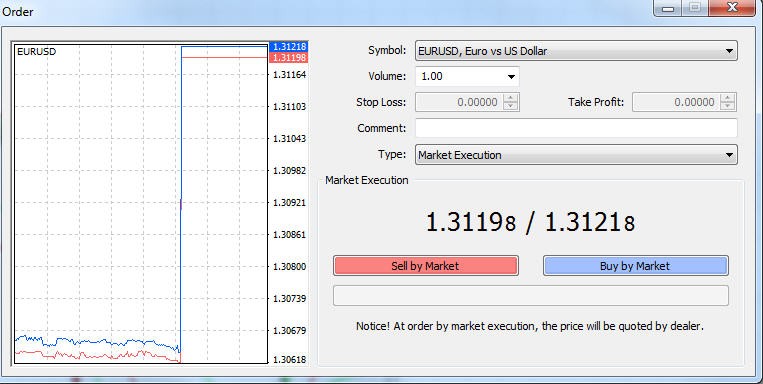Forex Bid Ask Spread
Post on: 5 Июль, 2015 No Comment

Like any financial market the Forex market has a bid ask spread. This is simply the difference between the price at which a currency pair can be bought and sold. This is what accounts for the negative number in the profit column as soon as you place a trade.
Before we go any further lets define the two terms, bid price and ask price.
Bid Price Used when selling a currency pair. It reflects how much of the quoted currency will be obtained if buying one unit of the base currency.
Ask Price -Used when buying a currency pair. It reflects the amount of quoted currency that has to be paid in order to buy one unit of the base currency.
Note: The bid price will always be smaller than the ask price.
Remember from the lesson on Forex currency pairs that the base currency is the one in front while the quote currency is the second. So using the example of EURUSD, the Euro is the base currency and the US Dollar is the quote currency.
It sounds tricky but its actually quite simple. Its essentially how much of one currency you can get for the other and vice versa. The most important thing to remember is that the bid price is used for selling while the ask price is used when buying.
At the end of the day all of these intricacies are taken care of for you by your broker. All you need to know is whether you want to go short (sell) or go long (buy)and your broker does the rest.
Which Currency Pairs Have the Lowest Spreads?
Its important to have an understanding of which currency pairs have the best (lowest) spreads when trading. While the major currency pairs and even some crosses have decent spreads, some of the more exotic currency pairs can have wide spreads, creating a large deficit as soon as you enter a trade.
The currency pairs with the lowest spreads are those with the largest daily volume. Essentially were talking about the major currency pairs, which are:
EURUSD, USDJPY, GBPUSD, USDCHF, AUDUSD, USDCAD, NZDUSD
These currency pairs typically have the lowest spreads, with EURUSD, GBPUSD and USDJPY being the lowest of them all.
One advantage to trading the higher time frames, which is what I teach on this site, is that the bid ask spread isnt quite as important as if you were trading the lower time frames. This is because on the larger time frames were interested in the larger moves and also making fewer trades. Compare this to the day trader who can make dozens of trades in a single day and may only be in a trade for a matter of minutes.
Make no mistake though, the spread on some of the less-liquid currency pairs can be significant and should certainly be considered before taking a trade, even when trading the higher time frames.
The Bid Ask Spread During Different Trading Sessions
We all know that the Forex market is a global market consisting of different trading sessions. These sessions are:
The bid ask spread for a currency pair can vary depending on the current trading session. For the most part the bid ask spread will be the lowest during the London and New York sessions as these carry the largest trading volume.
However there is a three hour window that occurs immediately after the New York session closes and before Tokyo opens in which the spreads can considerable. This is especially true for some of the currency crosses and exotic currency pairs but can also effect the major currency pairs.
Although the Sydney session opens as soon as New York closes, it isnt nearly as liquid as the New York session and therefore produces much larger spreads. It isnt until Tokyo comes online three hours later that volume picks up and most spreads return to normal.
Its important to keep this in mind if you plan on trading during this three hour window. In fact as a general rule you should always check the bid ask spread before entering a trade regardless of the current trading session.
In Summary
Before we close out this lesson, here are a few key points to keep in mind when it comes to the bid ask spread.
- The bid price is used when selling a currency pair
- The ask price is used when buying a currency pair
- The major currency pairs generally have the lowest spreads
- The bid ask spread for most pairs is considerably larger during the three hours immediately after the New York session
- Always check the bid ask spread before placing a trade
I hope this lesson has helped you to better understand the Forex bid ask spread as well as when to take extra care and watch for larger-than-usual spreads.
Now that we have a better understanding of the two prices that make up the Forex bid ask spread, lets take a look at how the spread is represented in the next lesson.














